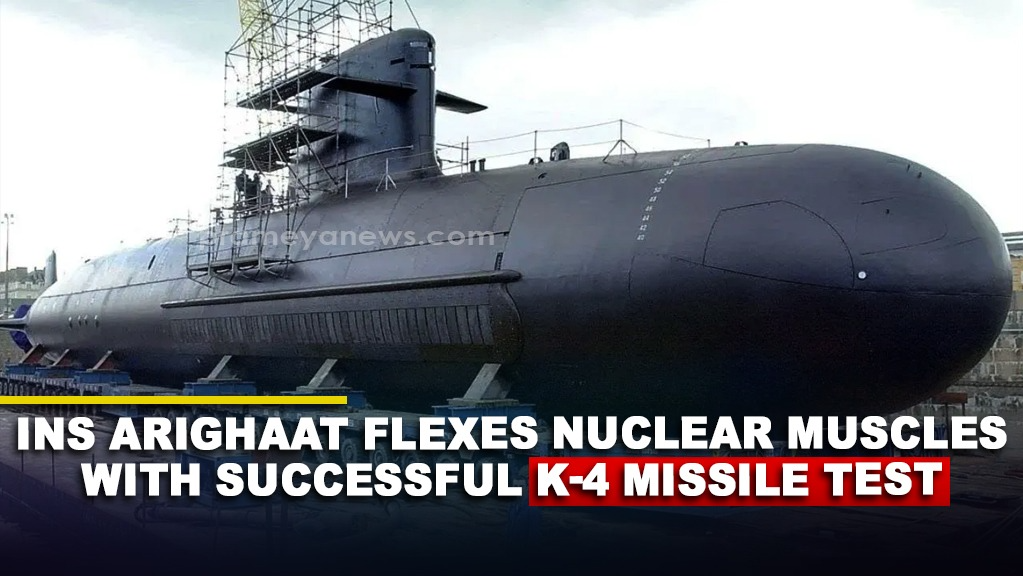

In a display of growing naval might, India has successfully conducted a test launch of its nuclear-capable K-4 submarine-launched ballistic missile (SLBM) from the newly commissioned INS Arighaat. This marks the first time the K-4 missile, with its impressive 3,500 km range, has been launched from an actual submarine, signifying a major milestone in India's strategic deterrence program.
The test, conducted off the coast of Visakhapatnam, saw the solid-fueled K-4 soar through the skies, adhering to the pre-declared 3,490-km flight corridor outlined in the Notice to Airmen (NOTAM) issued earlier. While a detailed analysis is underway to confirm the missile's complete adherence to trial parameters, initial reports suggest a successful launch.
This achievement is particularly significant given that previous K-4 tests were conducted from submersible pontoons, not an actual submarine.3 Launching from INS Arighaat, a 6,000-tonne nuclear-powered behemoth, provides a more realistic assessment of the missile's operational capabilities in a true combat scenario.
The K-4 missile, developed by the Defence Research and Development Organisation (DRDO), is a critical component of India's nuclear triad, providing a credible second-strike capability.5 This ensures that even if land-based nuclear assets are neutralized, India retains the ability to retaliate from the sea, maintaining a strategic balance.
INS Arighaat, commissioned just this past August, represents the cutting edge of India's submarine technology.6 It joins INS Arihant, India's first nuclear-powered submarine, in bolstering the nation's underwater nuclear deterrent.7 While Arihant is equipped with the shorter-range K-15 missiles (750 km), Arighaat's ability to deploy the K-4 significantly expands India's reach and operational flexibility.8
The successful K-4 test from INS Arighaat is a powerful statement of India's commitment to maintaining a robust and credible nuclear deterrent. This achievement not only enhances India's strategic autonomy but also sends a clear message of its determination to safeguard its national interests. As India continues to develop its submarine fleet, with a larger, 7,000-tonne submarine slated for induction next year, its naval prowess is set to grow even further, solidifying its position as a major player in the Indo-Pacific region.9 This test launch is a testament to India's technological advancements and its unwavering commitment to national security in an increasingly complex geopolitical environment.